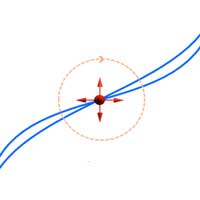
Electrons in chiral crystals, solid-state materials with definite handedness, can behave in unexpected ways. An interdisciplinary research team has realized now a theoretically predicted peculiar electronic state in a chiral compound, PtGa, from the class of topological materials.
